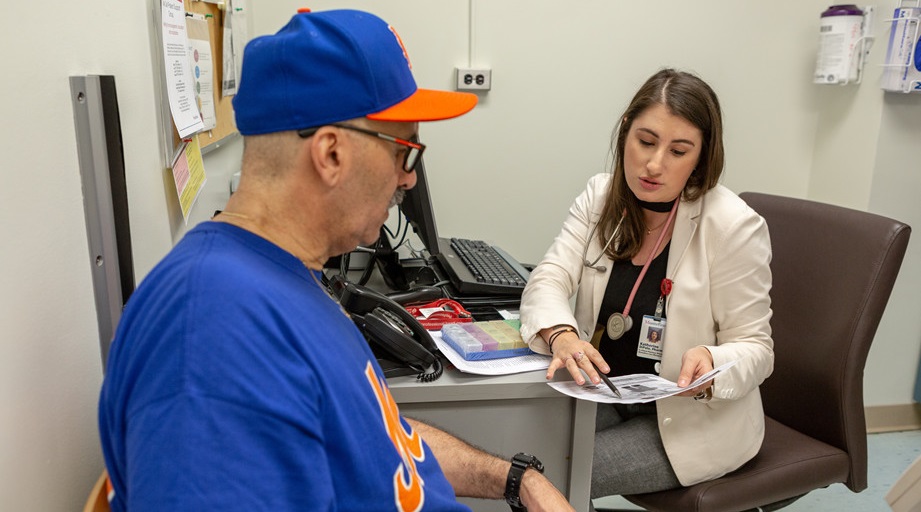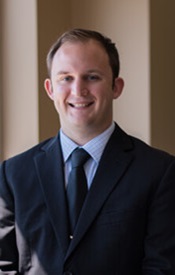
Ambulatory care pharmacy practice has grown far beyond its roots in primary care to encompass a growing number of specialties, says Jordan Wulz, associate professor of pharmacy practice at Concordia University Wisconsin.

“The opportunities really are endless for ambulatory care pharmacists,” he said. “And as we work towards an equitable reimbursement model for ambulatory care pharmacists, it’s my hope that we’ll one day see a pharmacist in every outpatient clinic.”
Wulz is a director-at-large for the ASHP Section of Ambulatory Care Practitioners Executive Committee and program chair for the June 8 ASHP Pharmacy Futures 2025 session Revolutionizing Ambulatory Care: Exploring Innovative Practice Areas.
Wulz shared a few details about the session with ASHP News ahead of the meeting. An edited transcript of the conversation follows.
ASHP: Why did you choose this topic for your session?
Wulz: The section Executive Committee designed the session to highlight some of the exciting areas, like neurology, substance use disorders, and house calls, where our members practice.
We think it’s important for other ambulatory care pharmacists — and pharmacy leaders — to learn about new opportunities in ambulatory care and how pharmacists can be incorporated into a variety of specialty clinics.
We’ll touch on what it takes to set up an ambulatory pharmacy service within a specialty clinic, what value that brings, and reimbursement strategies to make the service financially sustainable.
So that’s really the goal of this session — to help pharmacists get incorporated into a variety of specialty clinics beyond the traditional primary care model.
ASHP: What makes the session timely for Pharmacy Futures attendees?
Wulz: We believe opportunities for ambulatory care pharmacists will continue to expand as biologics and biosimilars are increasingly used for outpatient disease management.
Ambulatory care pharmacists bring immense value to primary care, and we are already expanding beyond the traditional primary care model. We’re involved in pain management, rheumatology, gastrointestinal disorder clinics, sports medicine, oncology clinics, and many other areas.
What’s behind the growth of specialty areas in ambulatory care practice?
Wulz: I think we’re seeing a combination of health-system leaders understanding the value of pharmacists in the outpatient setting, mixed with an influx of novel and, quite frankly, expensive medications.
Take migraine treatment as an example. Until 2018, there were no FDA-approved medications that were specifically designed to prevent chronic migraines. But after the approval of Aimovig, we saw a rush of new medications for migraine prevention and treatment.
Ambulatory care pharmacists quickly stepped in to help other clinicians with prescribing, monitoring, and troubleshooting these new medications.
In addition, many states have started to allow pharmacist billing and reimbursement through Medicaid and private payers. That’s made it a lot easier to financially justify pharmacist positions in specialty clinics.
If I’m an inpatient pharmacist, what might surprise me most about ambulatory care pharmacy practice?
Wulz: I think it might be the amount of autonomy that ambulatory care pharmacists have in prescribing medications, ordering labs, and managing other services.
Ambulatory care practice has progressed significantly even just in the last 10 years. In many states, pharmacists are now recognized as independent healthcare providers, and that creates new opportunities in ambulatory care practice.
What emerging areas of ambulatory care pharmacy practice are particularly exciting?
Wulz: Opioid use disorder is a really exciting area, and that’s one of the topics we’ll discuss in this session.
The federal X-waiver was removed in 2023. So pharmacists whose states allow them to obtain a Drug Enforcement Administration (DEA) number can now prescribe buprenorphine through collaborative practice.
But we still don’t have enough practitioners prescribing buprenorphine. So it’s an area that’s really ripe for pharmacist involvement, especially given the many nuances in dosing and microdosing of buprenorphine.
And too many states still don’t allow pharmacists to obtain a DEA number. That’s become a legislative priority for state pharmacy organizations.
Imagine an attendee coming up to you after the session; what could they say about the presentation that would make your day?
Wulz: I think it would be great if they said, “I had no idea ambulatory care pharmacists were involved in (fill in the blank).”








